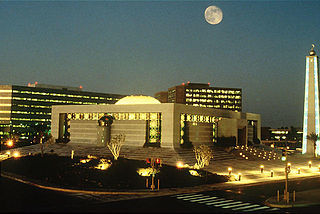
If there’s a certain retro feeling in the air, it’s not just because everyone’s talking about a Donald Trump presidential run and a song called “Me Myself & I” is in the charts. Oil markets are also starting to have a distinctly 1986 feel to them.
The collapse of the weekend’s oil talks in Doha heralds a phase where open spigots will drive prices lower once again. Brent crude fell as much as 7 percent when it opened after the meeting broke up in disarray. Saudi Arabia and other Gulf producers refused to cut production unless they could get a matching agreement from an Iran that hadn’t even bothered to attend the talks.
Brent’s decline post-meeting
7%
Iran has very little incentive to agree to such demands. As a relatively new entrant, Tehran will take whatever prices it can get. It may even choose to undercut the existing players where it spies an opportunity: As Bloomberg’s Sharon Cho and Serene Cheong noted earlier this month, Iran has been pricing its Forozan Blend crude below that of Saudi Aramco’s Arab Medium for three months running now, the first time that’s happened since 2008:
Citi estimates that Iran will add an extra 1 million barrels a day to global markets over the course of this year, exacerbating a glut that’s already caused the biggest oil-price collapse since John D. Rockefeller was barely out of short pants.
Back in 1986, Saudi was focused on the threat of the Soviet Union’s booming, higher-cost production, and boosted output by 1.6 million barrels a day to flood the market and leave itself as the strongest player standing. The 45 percent increase in production sent prices from north of $30 a barrel to south of $15, with some heavier, sour grades changing hands for well below $10.
Saudi Arabia will be hoping that history can repeat itself 30 years later, but its advantages aren’t quite as bulletproof as they were back then. Because of its less diverse economy and more lavish government sector, the price at which Saudi can balance its budget is some $25 higher than the equivalent for Iran. The country is already preparing for a post-oil era through measures such as an initial public offering of part of Saudi Aramco and mooted taxes on consumer spending and sugary drinks.
Balancing its external accounts isn’t going to be much easier. Iran needs an oil price of about $42.70 to balance its current account, according to IMF estimates, so was close to positive territory until this morning’s collapse. Saudi needs $59.20. Over the past year, there have been 31 trading days when WTI crude was at prices high enough to give Saudi a current account surplus; Iran has had 136.
While the kingdom’s foreign-exchange reserves still vastly outstrip Iran’s, the gap these days is a little close for comfort. Iran would find itself unable to pay for imports after 20 months of draining its reserves at current rates, but Saudi would hold out for more than three years.
At this point, restraint and stronger prices depend on most of the big players in the oil market having stronger incentives for cutting production than maintaining or increasing it.
That’s far from happening. Iraq is busy adding Kurdish exports back into the market, as explained by Gadfly’s Julian Lee. Iran is still emerging from the burden of sanctions, and is determined to rebuild its market share. Russia may be pushing for production cuts to alleviate pressure on its budget, but the decline in the ruble has cushioned the nation against the worst of the price declines.
The aftershocks of the 1986 oil-price collapse reverberated through the late 1980s, helping contribute to the following year’s Black Monday stock market crash, the first Gulf War and even the Soviet Union’s disintegration. A Saudi Arabia embracing the current spirit of chaos in oil markets should watch out that it doesn’t play the role of Moscow this time around.
Recommended for you
